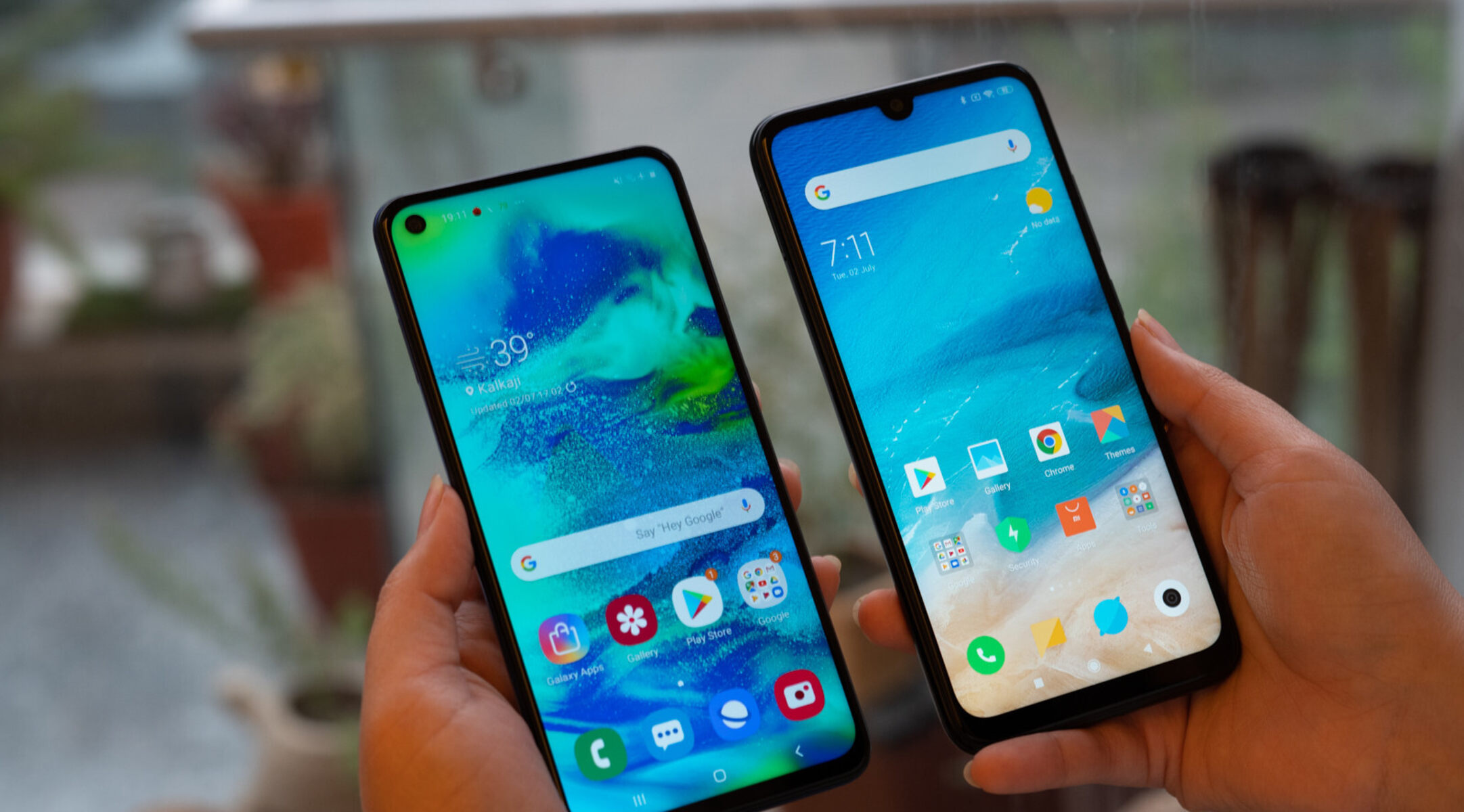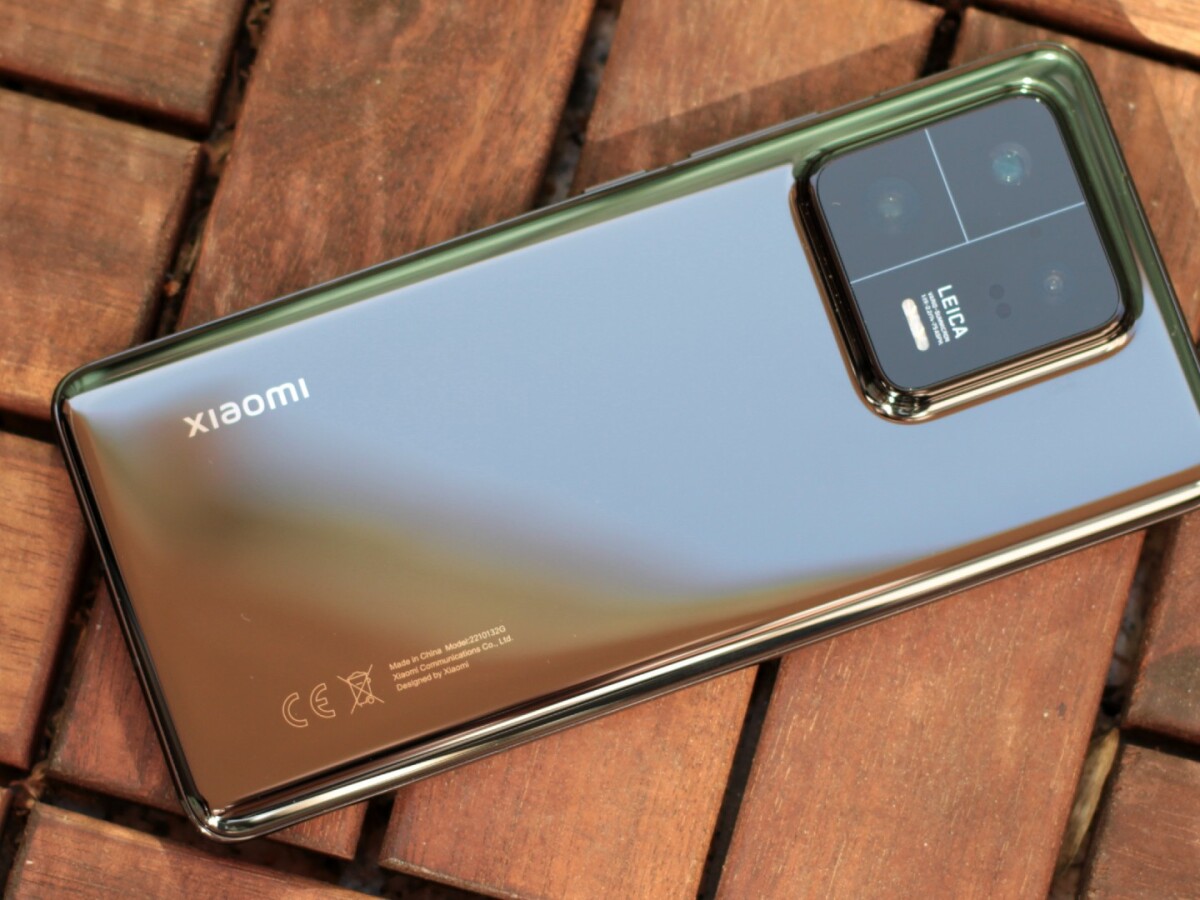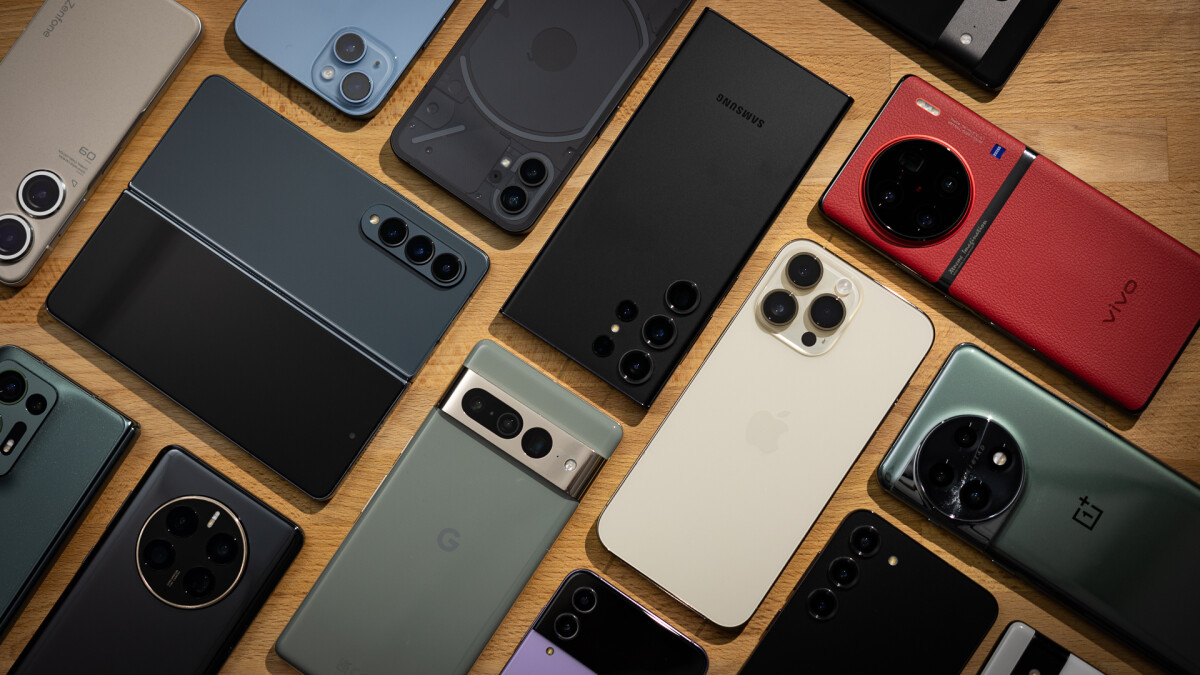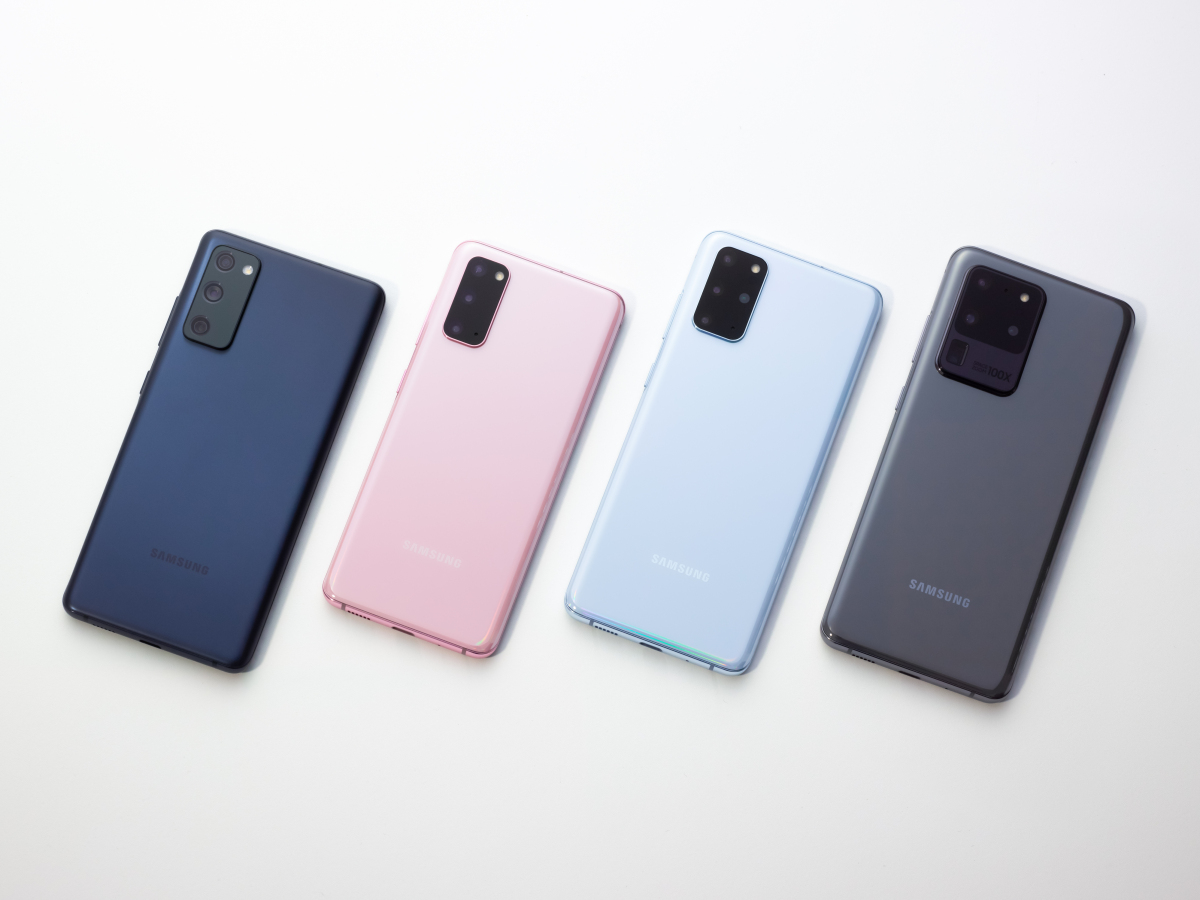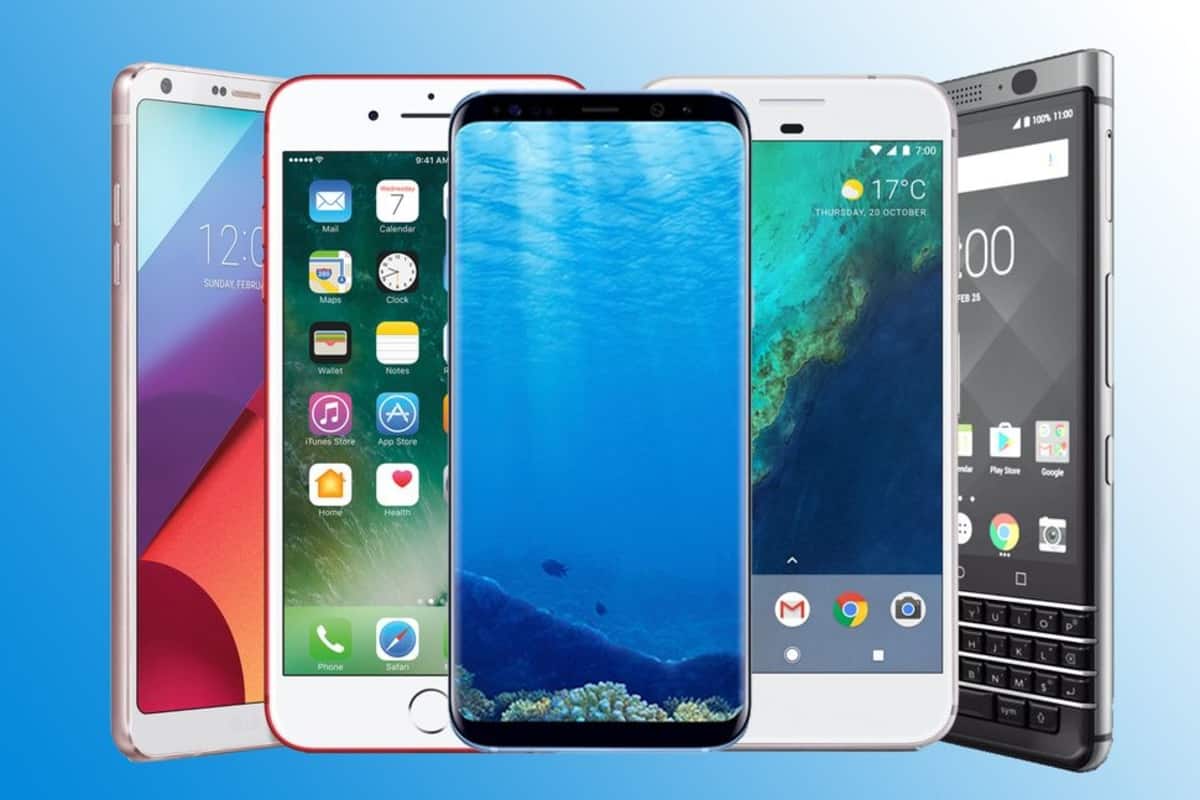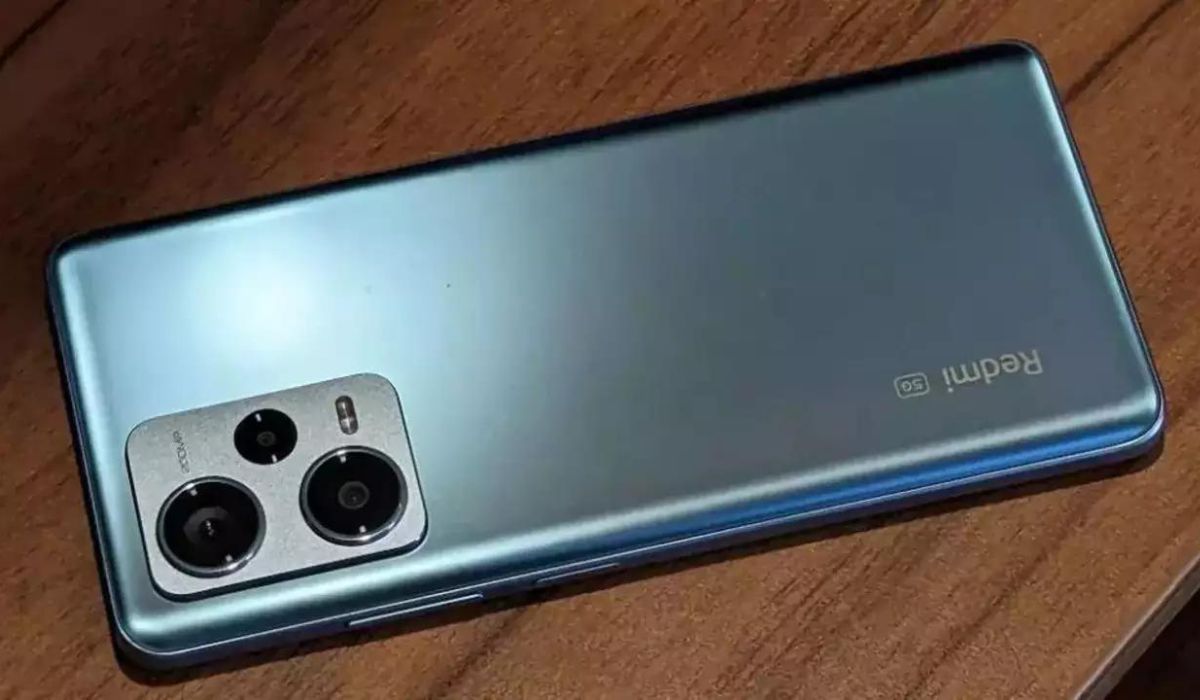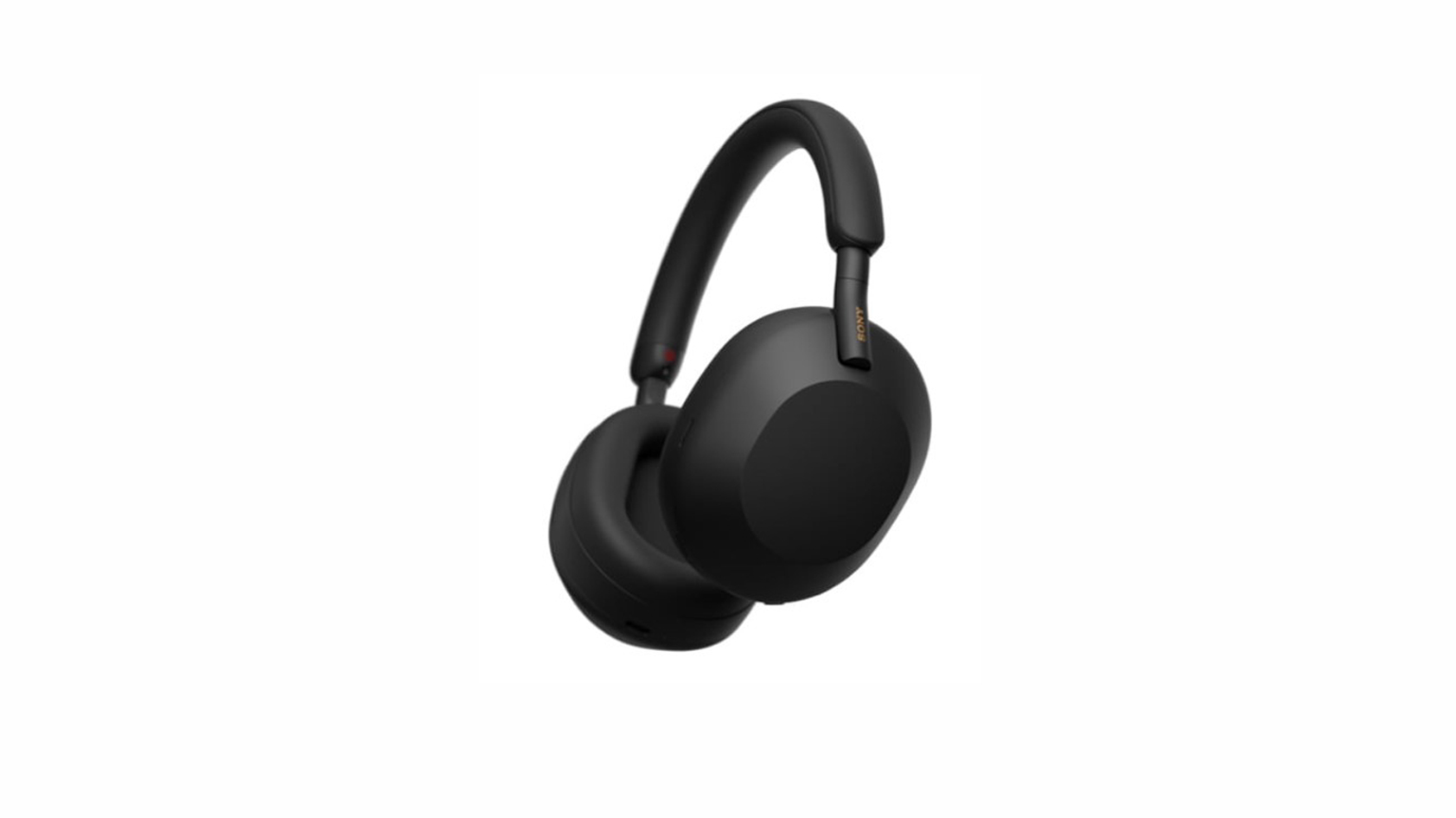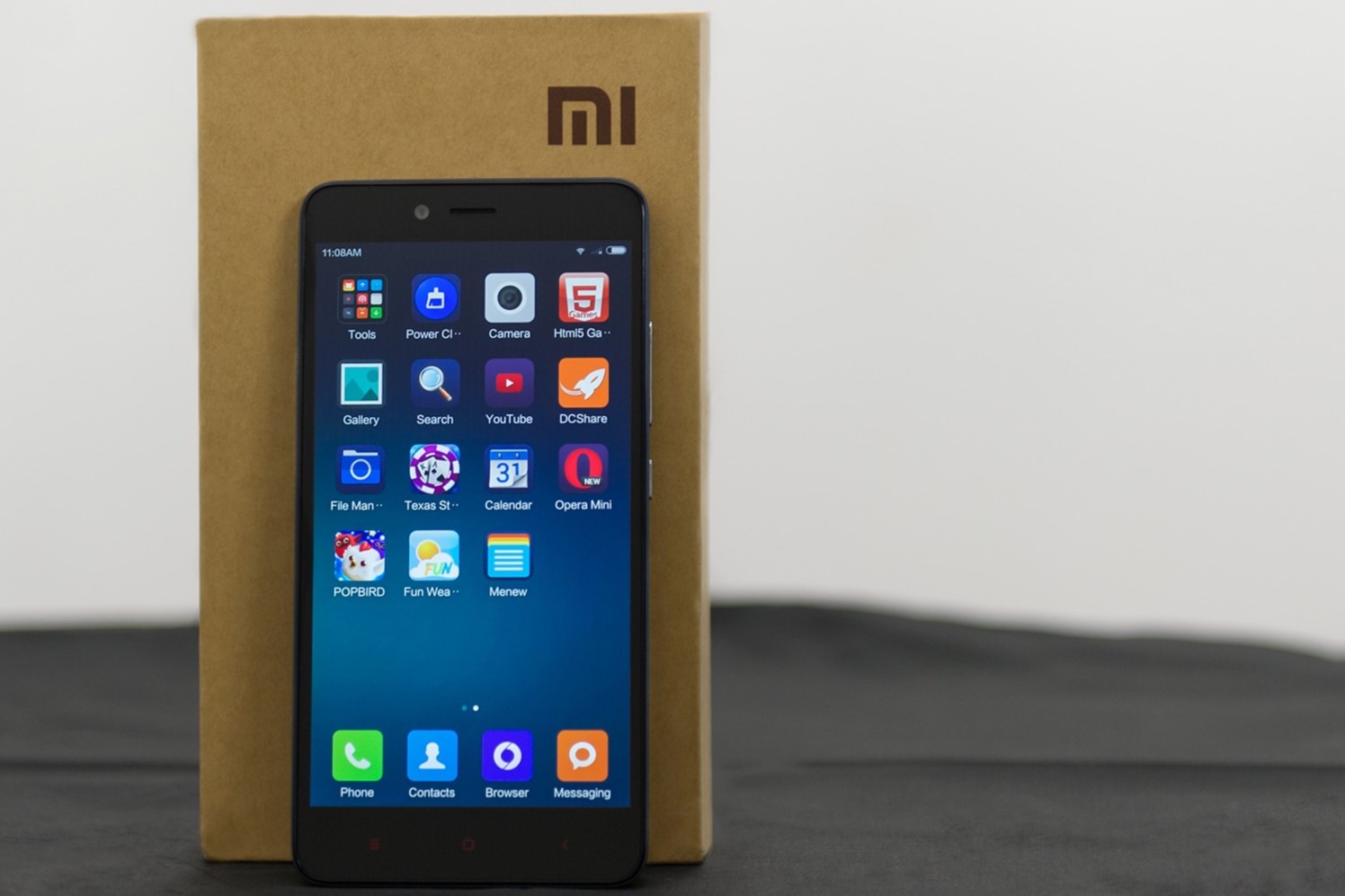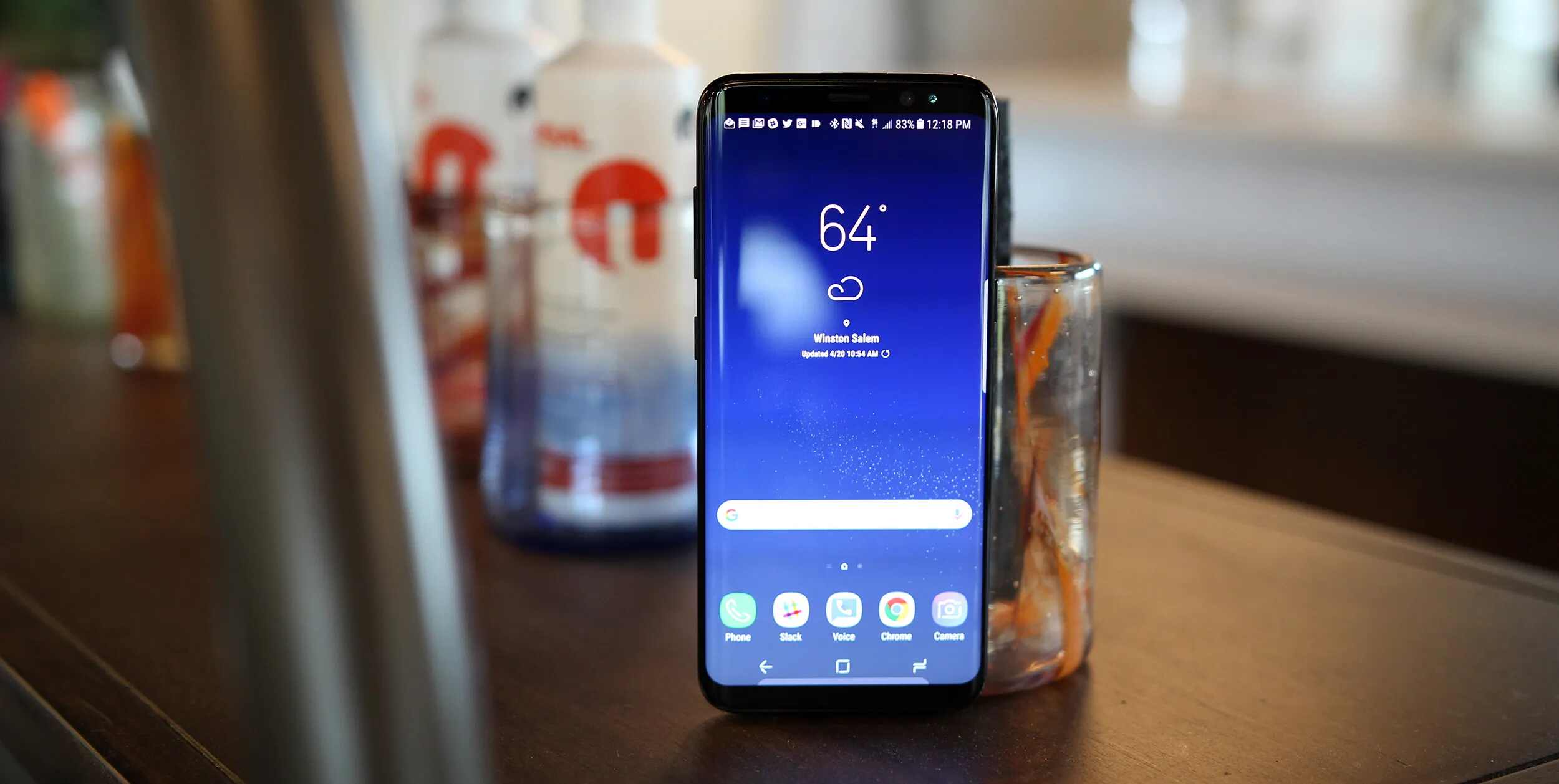Introduction
When it comes to choosing a new mobile device, the options seem endless. The market is flooded with a myriad of smartphones, each boasting its own set of features and capabilities. Among the sea of choices, Samsung and Redmi stand out as two prominent contenders, each with its own loyal following and unique offerings. Deciding between these two brands can be a daunting task, as both have carved out a niche for themselves in the highly competitive mobile device industry.
Samsung, a global giant renowned for its innovative technology and sleek designs, has consistently delivered high-quality smartphones that cater to a diverse range of users. On the other hand, Redmi, a subsidiary of Xiaomi, has gained popularity for its budget-friendly yet feature-packed devices, appealing to cost-conscious consumers without compromising on performance and functionality.
As consumers weigh their options, factors such as design, display quality, performance, camera capabilities, battery life, user interface, and overall value for money come into play. Each brand has its own strengths and weaknesses in these areas, making the decision-making process all the more challenging.
In this comprehensive comparison, we will delve into the key aspects of Samsung and Redmi smartphones, providing an in-depth analysis to help you make an informed decision. By examining the design and build quality, display performance, hardware specifications, camera prowess, battery longevity, user interface, and pricing, we aim to shed light on the strengths and weaknesses of each brand, ultimately assisting you in determining which option aligns best with your preferences and requirements. So, let's embark on this journey to unravel the intricacies of Samsung and Redmi smartphones, empowering you to make a well-informed choice for your next mobile companion.
Design and Build Quality
The design and build quality of a smartphone play a pivotal role in shaping the overall user experience. Samsung and Redmi have distinct approaches when it comes to the aesthetics and construction of their devices, catering to different consumer preferences.
Samsung has long been synonymous with premium design, often incorporating sleek metal and glass constructions in its flagship models. The attention to detail and refined craftsmanship are evident in the seamless integration of materials, resulting in a sophisticated and visually appealing exterior. The curved edges, slim profiles, and attention-grabbing finishes contribute to Samsung's reputation for producing devices that exude elegance and modernity.
In contrast, Redmi devices are known for their practical and utilitarian design language. While they may not boast the same level of opulence as Samsung's offerings, Redmi smartphones are designed with functionality and durability in mind. The focus is on creating devices that are ergonomic, comfortable to hold, and capable of withstanding the rigors of daily use. This approach resonates with consumers who prioritize practicality and reliability in their mobile devices.
Both Samsung and Redmi have made significant strides in the realm of build quality, ensuring that their devices are robust and resilient. Samsung's flagship models often feature IP68 water and dust resistance, providing added peace of mind for users in various environments. Redmi, on the other hand, leverages high-quality materials and meticulous engineering to deliver sturdy devices that can endure the demands of everyday life.
In terms of design innovation, Samsung has been at the forefront of pushing boundaries with concepts such as edge displays and foldable form factors, showcasing a commitment to pushing the envelope in smartphone design. Redmi, while focusing on more traditional designs, has consistently refined its aesthetic language to offer a blend of practicality and visual appeal.
Ultimately, the choice between Samsung and Redmi in terms of design and build quality boils down to individual preferences. Whether you prioritize premium aesthetics and cutting-edge design or value practicality and durability, both brands have something unique to offer in the realm of smartphone design and construction.
Display Quality
The display quality of a smartphone is a defining factor in the overall user experience, influencing everything from multimedia consumption to productivity and gaming. Both Samsung and Redmi have made significant strides in this area, offering displays that cater to a wide spectrum of user preferences.
Samsung, renowned for its cutting-edge display technology, has consistently set the bar high with its Super AMOLED and Dynamic AMOLED panels. These displays are characterized by vibrant colors, deep blacks, and high contrast ratios, resulting in an immersive viewing experience. The incorporation of HDR support further enhances the visual fidelity, allowing users to enjoy content with stunning clarity and detail. Additionally, Samsung's flagship models often feature high refresh rates, such as 120Hz or 144Hz, delivering silky-smooth animations and responsiveness, particularly beneficial for gaming and fluid navigation.
On the other hand, Redmi has made significant strides in equipping its devices with impressive displays that punch above their weight in terms of quality. While not as advanced as Samsung's premium offerings, Redmi smartphones often feature IPS LCD or AMOLED panels that deliver vibrant colors and respectable brightness levels. The incorporation of features such as Reading Mode and Dark Mode enhances the versatility of Redmi displays, catering to users who prioritize eye comfort and readability in various lighting conditions.
Both Samsung and Redmi have embraced the trend of edge-to-edge displays with minimal bezels, providing an expansive canvas for content consumption and interaction. The implementation of high-resolution displays, such as Full HD+ or Quad HD+, ensures sharpness and detail, contributing to an engaging visual experience.
In terms of display size, Samsung's flagship models often boast larger screens, catering to users who prefer a more expansive viewing area for multimedia and productivity tasks. Redmi, on the other hand, offers a diverse range of display sizes, catering to users with varying preferences, including those who prioritize compact form factors for one-handed usability.
Ultimately, the choice between Samsung and Redmi in terms of display quality hinges on individual preferences and usage patterns. Whether you prioritize the vividness and technological prowess of Samsung's Super AMOLED displays or value the balance of quality and affordability offered by Redmi's display offerings, both brands have something unique to offer in the realm of smartphone displays.
Performance and Hardware
The performance and hardware of a smartphone are crucial factors that directly impact the user experience, influencing everything from multitasking and gaming to overall responsiveness. Both Samsung and Redmi have made significant strides in this domain, equipping their devices with powerful hardware and optimized software to deliver seamless performance.
Samsung's flagship smartphones are powered by cutting-edge processors, such as the Qualcomm Snapdragon series or Samsung's in-house Exynos chips, depending on the region. These processors are complemented by ample RAM and storage options, ensuring that users can tackle demanding tasks with ease. The integration of advanced cooling systems in flagship models further enhances sustained performance, allowing users to push their devices to the limit without encountering thermal throttling.
In the case of Redmi, the brand has garnered acclaim for offering impressive performance at accessible price points. Redmi smartphones often feature Qualcomm Snapdragon processors, known for their balance of power efficiency and computational prowess. Coupled with generous RAM and storage configurations, Redmi devices deliver snappy performance for everyday tasks, including web browsing, social media usage, and light gaming.
Both Samsung and Redmi have prioritized hardware optimization to extract the maximum potential from their respective components. This optimization is evident in the fluidity of the user interface, app launch times, and overall system responsiveness. Additionally, the inclusion of advanced GPU units in flagship models caters to gaming enthusiasts, ensuring smooth frame rates and immersive gameplay experiences.
In terms of hardware features, Samsung's flagship devices often boast cutting-edge technologies such as high-resolution cameras with advanced image processing capabilities, stereo speakers for immersive audio, and in-display fingerprint sensors for convenient authentication. Redmi, on the other hand, focuses on delivering essential hardware features that cater to the needs of budget-conscious consumers, including reliable cameras, long-lasting batteries, and expandable storage options.
The choice between Samsung and Redmi in terms of performance and hardware hinges on individual usage patterns and preferences. Whether you prioritize the bleeding-edge performance and feature-rich hardware of Samsung's flagship devices or value the balance of performance and affordability offered by Redmi's smartphone lineup, both brands cater to a diverse spectrum of users seeking reliable and capable mobile devices.
Camera Quality
The camera quality of a smartphone has become a pivotal consideration for consumers, shaping the way we capture and immortalize our most cherished moments. Both Samsung and Redmi have invested heavily in advancing their camera technologies, aiming to deliver exceptional imaging capabilities across their respective smartphone lineup.
Samsung, renowned for its prowess in imaging technology, has consistently raised the bar with its flagship smartphone cameras. The incorporation of cutting-edge sensor technology, coupled with advanced image processing algorithms, results in stunning image quality across various lighting conditions. The flagship Samsung devices often feature multi-lens camera setups, including wide, ultra-wide, and telephoto lenses, enabling users to capture a diverse range of perspectives with unparalleled detail and clarity. The integration of features such as optical image stabilization (OIS) and advanced computational photography further enhances the versatility and reliability of Samsung's smartphone cameras, ensuring sharp and blur-free images and videos.
In contrast, Redmi has made significant strides in democratizing impressive camera capabilities, particularly in its mid-range and budget-friendly smartphone offerings. Redmi smartphones often feature versatile camera setups, leveraging AI-powered scene recognition and advanced software processing to deliver compelling image quality. The incorporation of dedicated macro lenses and depth sensors expands the creative possibilities for users, allowing them to explore new realms of photography without breaking the bank. Additionally, Redmi's commitment to refining its camera software through regular updates has resulted in tangible improvements in image processing and overall camera performance.
Both Samsung and Redmi have embraced the trend of high-resolution sensors and advanced computational photography techniques, enabling users to capture intricate details and vibrant colors in their photos and videos. The integration of features such as night mode and AI-enhanced image processing further elevates the low-light photography capabilities of their respective smartphone cameras, ensuring that users can capture stunning moments even in challenging lighting conditions.
Ultimately, the choice between Samsung and Redmi in terms of camera quality hinges on individual preferences and the intended usage of the smartphone camera. Whether you prioritize the cutting-edge imaging capabilities and versatile camera setups of Samsung's flagship devices or value the balance of affordability and impressive camera performance offered by Redmi's smartphone lineup, both brands cater to a diverse spectrum of users seeking to unleash their creativity and capture life's moments with unparalleled clarity and expression.
Battery Life
The battery life of a smartphone is a critical aspect that directly impacts the usability and convenience of the device. Both Samsung and Redmi have made significant strides in optimizing battery performance across their respective smartphone lineups, aiming to deliver reliable endurance for varied usage scenarios.
Samsung's flagship smartphones are equipped with high-capacity batteries that are adept at providing all-day longevity, catering to the demands of modern users. The integration of power-efficient display technologies, coupled with advanced battery management algorithms, ensures that users can tackle their daily tasks without constantly worrying about running out of power. Additionally, Samsung has embraced fast-charging technologies, allowing users to quickly replenish their device's battery, minimizing downtime and enhancing overall productivity.
Redmi, known for its commitment to delivering value-driven smartphones, has prioritized battery longevity across its diverse lineup. Redmi devices often feature sizable battery capacities that excel in delivering extended usage on a single charge. The optimization of software and hardware components contributes to efficient power utilization, ensuring that users can rely on their devices throughout the day without the need for frequent recharging. Furthermore, Redmi smartphones often incorporate fast-charging solutions, enabling users to swiftly top up their devices and stay connected on the go.
Both Samsung and Redmi have recognized the importance of battery optimization in enhancing the user experience, particularly in an era where smartphones serve as indispensable tools for communication, productivity, and entertainment. The integration of power-saving modes and intelligent battery management features further augments the endurance of their respective devices, providing users with the flexibility to tailor their usage based on their specific needs and preferences.
Ultimately, the choice between Samsung and Redmi in terms of battery life hinges on individual usage patterns and the importance of prolonged endurance in daily smartphone usage. Whether you prioritize the robust battery performance and fast-charging capabilities of Samsung's flagship devices or value the balance of endurance and affordability offered by Redmi's smartphone lineup, both brands cater to users seeking reliable and long-lasting battery life in their mobile devices.
User Interface and Software
The user interface (UI) and software experience of a smartphone are pivotal in shaping the overall usability and interaction with the device. Both Samsung and Redmi have invested in refining their UI design and software features to deliver intuitive and feature-rich experiences for users.
Samsung, known for its One UI, has prioritized user-centric design principles, aiming to streamline navigation and enhance usability across its smartphone lineup. The One UI interface is characterized by a clean and visually appealing design, complemented by thoughtful features such as one-handed mode and customizable app layouts. The integration of system-wide dark mode not only reduces eye strain but also contributes to improved battery efficiency, catering to users who prioritize visual comfort and longevity. Furthermore, Samsung's commitment to providing regular software updates ensures that users benefit from the latest security patches and feature enhancements, contributing to the longevity and relevance of their devices.
In the case of Redmi, the MIUI (Mi User Interface) has garnered acclaim for its versatility and customization options, allowing users to tailor their smartphone experience to align with their preferences. The MIUI interface offers a wealth of customization features, including theme support, app lock, and gesture navigation, empowering users to personalize their devices according to their unique style and workflow. Redmi's focus on optimizing the software experience through performance enhancements and bug fixes via frequent updates underscores the brand's commitment to delivering a polished and reliable user interface.
Both Samsung and Redmi have embraced the trend of incorporating AI-driven features into their respective UI and software experiences, enhancing functionalities such as intelligent battery management, context-aware recommendations, and adaptive performance optimization. The integration of digital well-being tools, including screen time management and focus mode, underscores the brands' dedication to promoting a balanced and mindful approach to smartphone usage.
Ultimately, the choice between Samsung and Redmi in terms of user interface and software hinges on individual preferences and the desired level of customization and feature set. Whether you prioritize the user-centric design and seamless integration of features offered by Samsung's One UI or value the versatility and customization options provided by Redmi's MIUI, both brands cater to users seeking a refined and tailored software experience in their mobile devices.
Price and Value for Money
Price and value for money are pivotal considerations for consumers when making a decision about purchasing a smartphone. Both Samsung and Redmi offer diverse pricing strategies and value propositions, catering to a wide spectrum of consumers with varying budget constraints and feature preferences.
Samsung, known for its premium flagship devices, often commands a higher price point compared to its competitors. The brand's flagship smartphones, such as the Galaxy S and Note series, are positioned as top-tier offerings, incorporating cutting-edge technology, innovative features, and refined design elements. While the upfront cost of Samsung's flagship devices may be higher, the brand aims to deliver exceptional value through a combination of advanced hardware, software optimization, and comprehensive after-sales support. Additionally, Samsung's commitment to providing a holistic ecosystem, including wearables, smart home integration, and software services, contributes to the overall value proposition for consumers invested in the Samsung ecosystem.
On the other hand, Redmi has gained acclaim for its value-driven approach, offering feature-packed smartphones at competitive price points. The brand's diverse lineup encompasses budget-friendly devices that prioritize essential features and reliable performance, catering to cost-conscious consumers seeking compelling value for their money. Redmi's ability to deliver impressive hardware specifications, capable cameras, and extended battery life at accessible price points has resonated with a broad audience, positioning the brand as a formidable contender in the mid-range and budget smartphone segments.
The choice between Samsung and Redmi in terms of price and value for money hinges on individual budget considerations and feature priorities. While Samsung's flagship devices offer a premium experience with a corresponding price tag, Redmi's smartphones excel in delivering a compelling balance of features, performance, and affordability. Whether consumers prioritize the prestige and advanced capabilities of Samsung's premium offerings or seek the value-driven propositions and accessible pricing of Redmi's smartphone lineup, both brands cater to diverse consumer segments seeking a smartphone that aligns with their budget and feature requirements.
Ultimately, the decision regarding price and value for money revolves around aligning the smartphone's cost with the perceived benefits and features that best suit the individual's needs and preferences. Both Samsung and Redmi aim to provide compelling value propositions, ensuring that consumers have access to smartphones that deliver a satisfying and rewarding user experience without compromising on essential functionalities.
Conclusion
In the realm of smartphone choices, the decision between Samsung and Redmi ultimately hinges on a multitude of factors, each catering to diverse consumer preferences and priorities. Both brands have carved out distinct identities, offering compelling value propositions and unique strengths that resonate with different segments of the market.
Samsung, renowned for its premium design language, cutting-edge display technology, and innovative hardware features, appeals to users seeking a top-tier smartphone experience. The brand's flagship devices, characterized by refined craftsmanship and advanced capabilities, cater to consumers who prioritize prestige, performance, and a comprehensive ecosystem of interconnected devices and services.
On the other hand, Redmi has established itself as a formidable contender in the mid-range and budget smartphone segments, delivering feature-packed devices at accessible price points. The brand's commitment to balancing performance, camera capabilities, and battery longevity with affordability has resonated with cost-conscious consumers seeking reliable and capable smartphones without breaking the bank.
When making the choice between Samsung and Redmi, it's essential to consider individual preferences regarding design aesthetics, display quality, performance requirements, camera capabilities, battery life expectations, software experience, and budget constraints. Whether one prioritizes the opulence and advanced technology of Samsung's flagship devices or seeks the balance of performance and affordability offered by Redmi's smartphone lineup, both brands cater to a diverse spectrum of users with varied needs and expectations.
Ultimately, the decision between Samsung and Redmi is a nuanced one, influenced by personal preferences, usage patterns, and the perceived value of the overall smartphone experience. By carefully evaluating the strengths and weaknesses of each brand across the key aspects of smartphone ownership, consumers can make an informed decision that aligns with their unique requirements, ensuring that their chosen smartphone becomes a reliable and rewarding companion in their daily lives.







